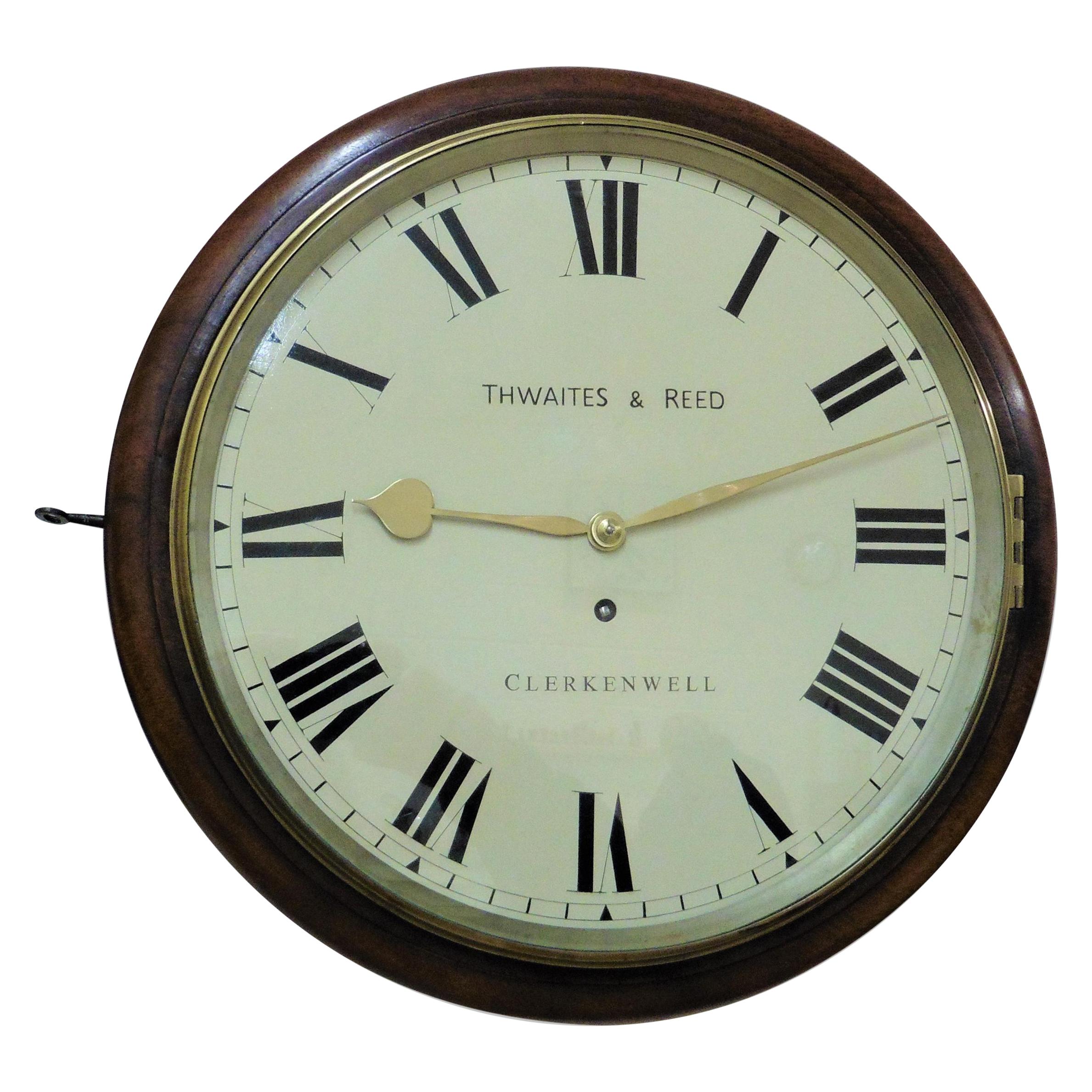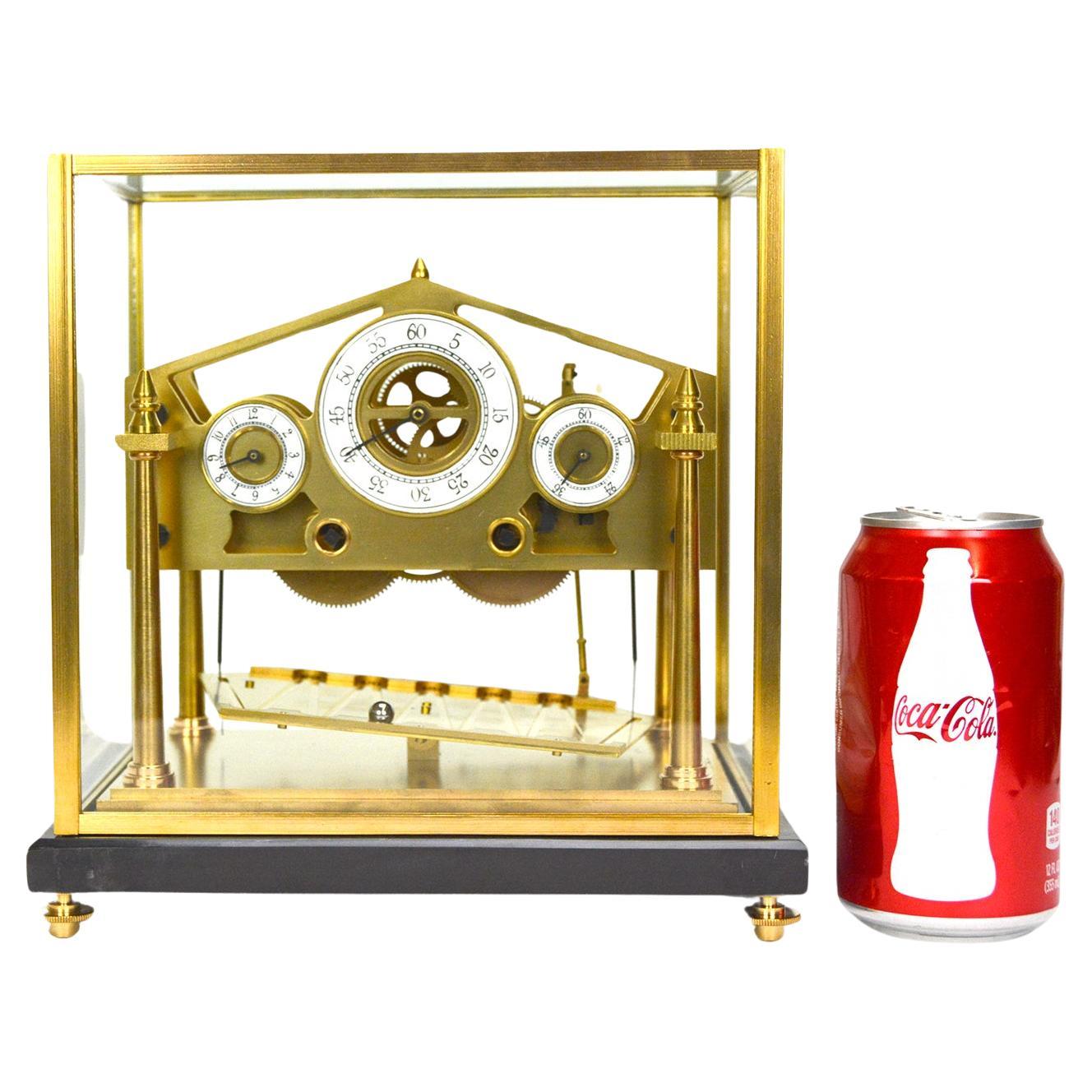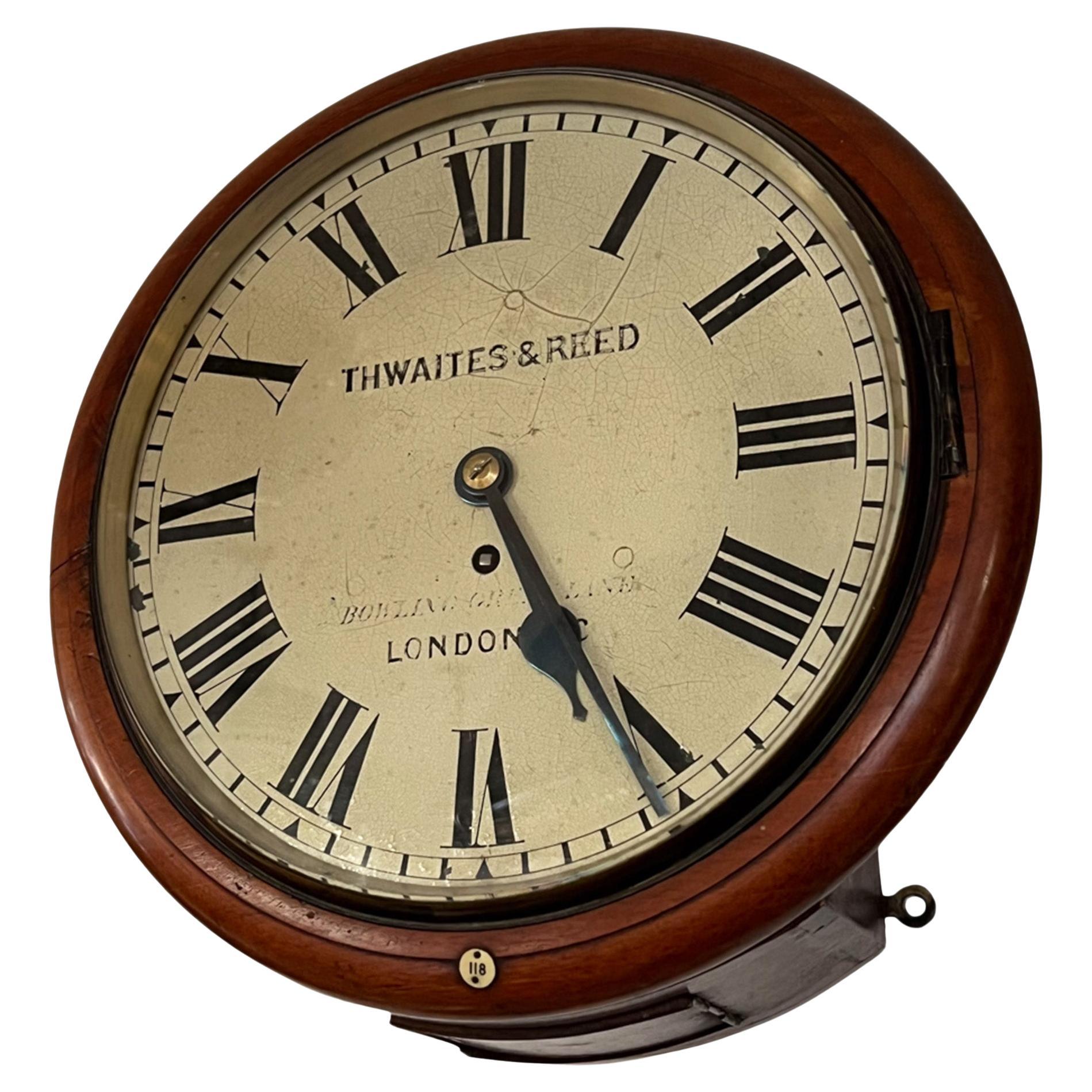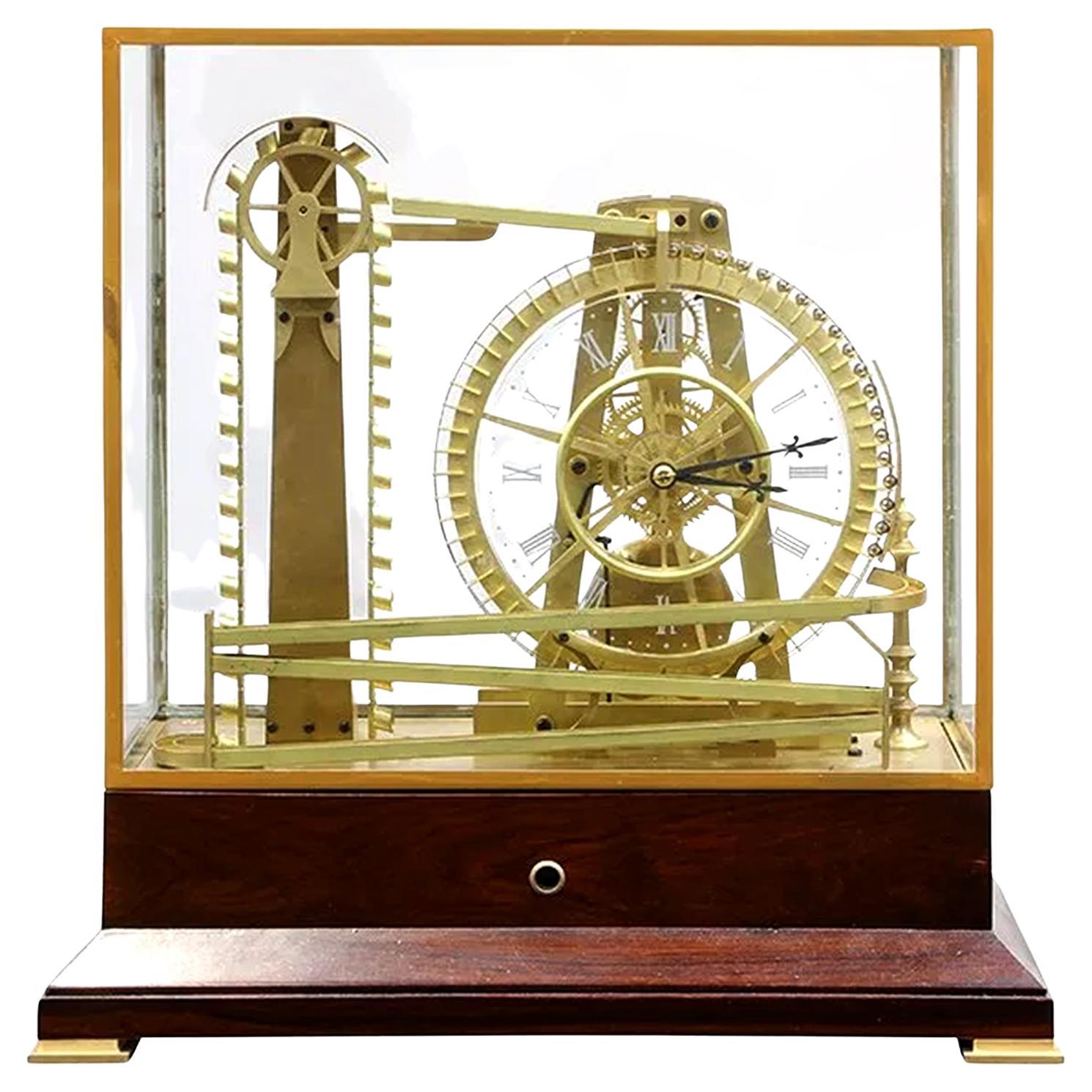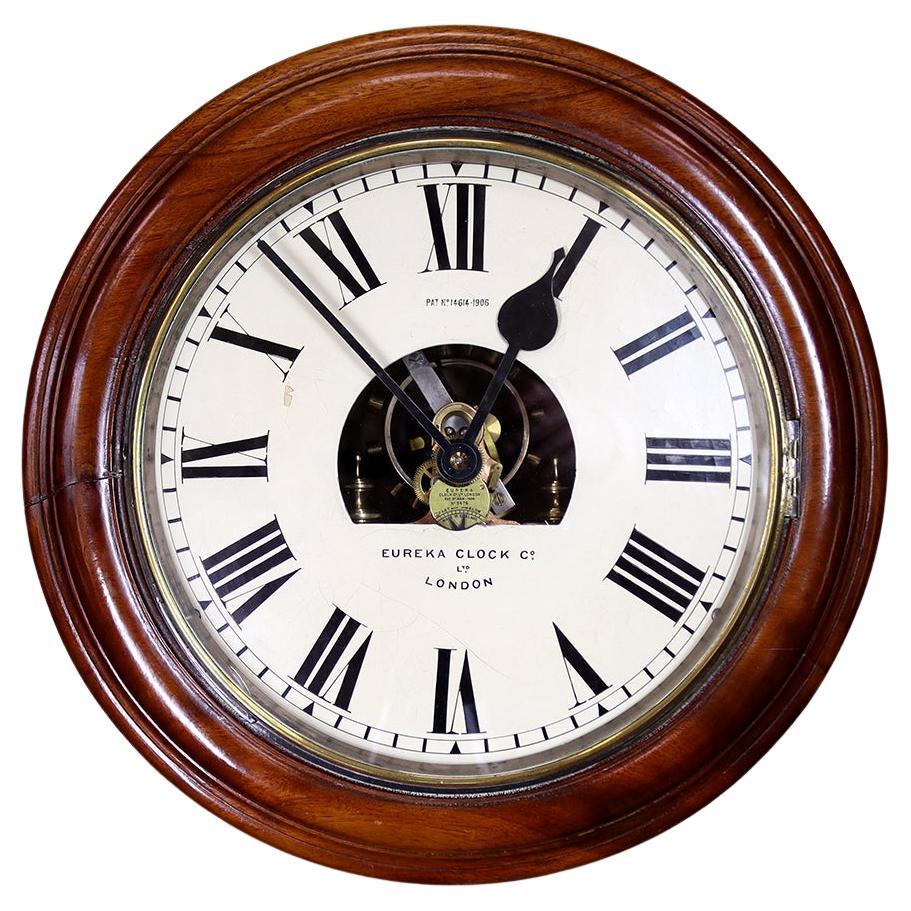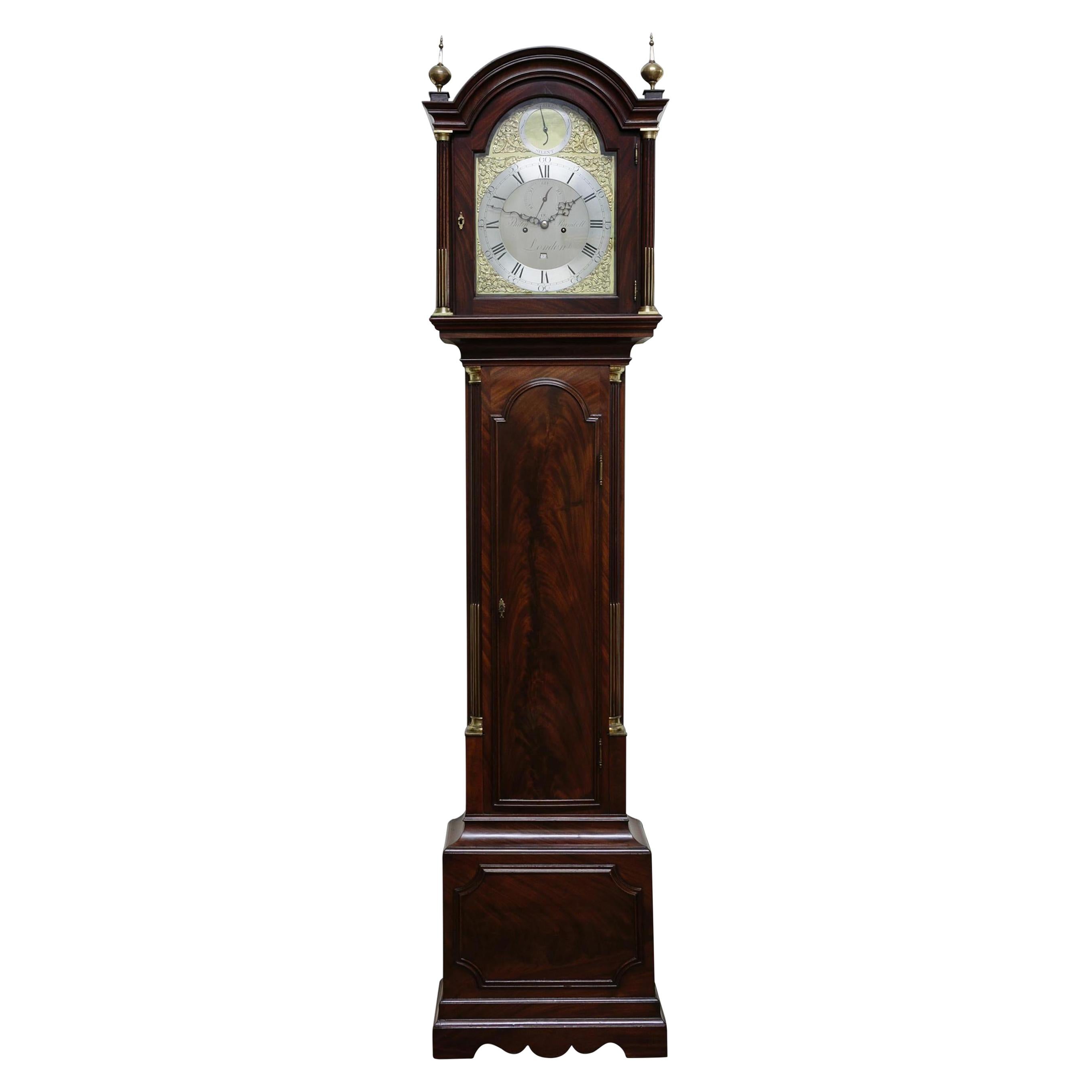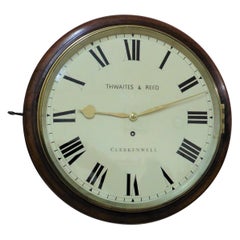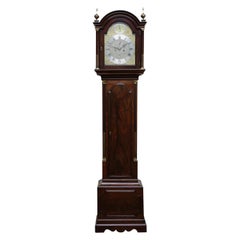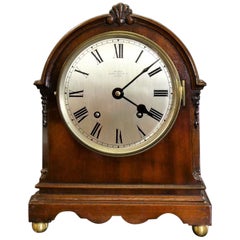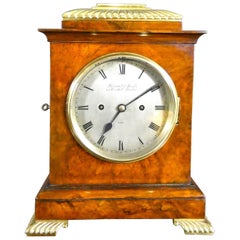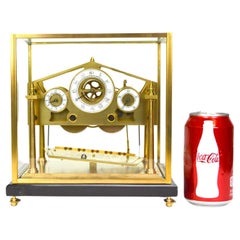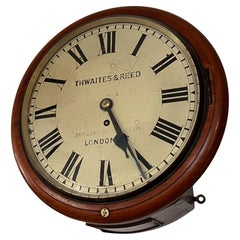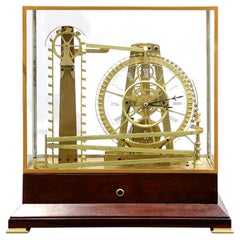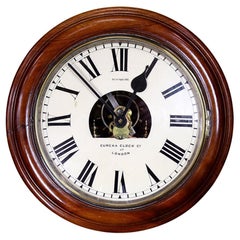Items Similar to Congreve Rolling Ball Clock by Thwaites & Reed, London
Want more images or videos?
Request additional images or videos from the seller
1 of 9
Congreve Rolling Ball Clock by Thwaites & Reed, London
About the Item
Congreve Rolling Ball Clock
Sir William was born in 1772 and died in 1828, son of General Sir William Congreve, 1st Baronet. He was a Tory member of parliament who immersed himself in inventing at the Royal Arsenal. Pioneering the development and deployment of Congreve rockets. He was a fellow of the Royal Society and enjoyed the friendship of the Prince Regent.
Congreve Rolling Ball Clock was invented by Sir William Congreve in 1808. Sir William was not a clockmaker but an inventor. He hired the well known firm of clockmakers Gravel and Tolkien to produce the first working version which was weight (rather than spring) driven. He presented this to the Prince of Wales in 1808. The second version which was spring driven was constructed by John Moxon and is now in the collection at Buckingham Palace.
The clock uses a steel ball rolling along a horizontal zig-zag track rather than a pendulum to regulate the time. The ball takes fifteen seconds to run from one end of the track to the other, where it trips the escapement which in turn reverses the tilt of the tray and causes the hands of the clock to move forward. Therefore, the second hand jumps forward at every fifteen second interval.
Congreve Rolling Ball clocks are unreliable timekeepers, the time taken for the ball to traverse the track can vary greatly depending on the circumstances of the ball and of the track.
This very fine example was made in 1973 by the famous London clockmaking firm of Twaites and Reed as a limited edition of 100. This one is numbered 49. The clock stands on a lacquered brass stepped base with rectangular ‘Zig-Zag’ table for the rolling ball and revolving seconds above. Gilded, reeded Corinthian columns support the architectural pediment with three silvered dials for seconds, minutes and hours. This magnificent timepiece rests on a mahogany stepped base with adjustable gilded feet. The silvered plaque to the base reads ‘This clock, No.49 of a limited edition of 100, made in 1973 by Thwaites and Reed Ltd’.
- Creator:Thwaites & Reed (Clockmaker)
- Dimensions:Height: 21.5 in (54.61 cm)Width: 18.5 in (46.99 cm)Depth: 12.5 in (31.75 cm)
- Materials and Techniques:
- Place of Origin:
- Period:
- Date of Manufacture:1973
- Condition:Wear consistent with age and use. very good condition.
- Seller Location:Norwich, GB
- Reference Number:Seller: SKU000011881stDibs: LU4037334473862
About the Seller
5.0
Vetted Professional Seller
Every seller passes strict standards for authenticity and reliability
1stDibs seller since 2018
65 sales on 1stDibs
Typical response time: 2 hours
Associations
The British Antique Dealers' AssociationLAPADA - The Association of Arts & Antiques Dealers
- ShippingRetrieving quote...Shipping from: Norwich, United Kingdom
- Return Policy
Authenticity Guarantee
In the unlikely event there’s an issue with an item’s authenticity, contact us within 1 year for a full refund. DetailsMoney-Back Guarantee
If your item is not as described, is damaged in transit, or does not arrive, contact us within 7 days for a full refund. Details24-Hour Cancellation
You have a 24-hour grace period in which to reconsider your purchase, with no questions asked.Vetted Professional Sellers
Our world-class sellers must adhere to strict standards for service and quality, maintaining the integrity of our listings.Price-Match Guarantee
If you find that a seller listed the same item for a lower price elsewhere, we’ll match it.Trusted Global Delivery
Our best-in-class carrier network provides specialized shipping options worldwide, including custom delivery.More From This Seller
View AllRegency Round Dial Wall Clock by Thwaites and Reed, London
Located in Norwich, GB
English round dial wall clock by Thwaites and Reed.
Mahogany round dial wall clock with cast brass bezel opening to a painted twelve inch dial sign...
Category
Antique 19th Century British Regency Wall Clocks
Materials
Mahogany
George I Longcase Clock by William Holloway, London
Located in Norwich, GB
George I longcase clock by William Holloway, London
Georgian longcase clock in a finely figured mahogany case standing on a stepped ba...
Category
Antique 1720s British Georgian Grandfather Clocks and Longcase Clocks
Materials
Mahogany
Small Mahogany Mantel Clock by Webster, London
By Richard Webster
Located in Norwich, GB
Small mahogany mantel clock by Webster, London
Break arch case with applied carved decoration resting on a shaped stepped plinth and standing on four brass ball feet.
Brass bezel opening to the silvered dial with Roman numerals, original ‘blued’ steel hands signed Webster, Queen Victoria Street, London.
The hinged back door opening to the eight day movement with platform escapement striking the hours and halves on a coiled gong. The backplate of the clock also signed Webster. C.1880
The Webster family clockmaking business was founded by William Webster and passed from father to son for almost 200 years.
William Webster was apprenticed to John Barnet in 1701 and then transferred to Thomas Tompion...
Category
Antique 1880s English Late Victorian Mantel Clocks
Materials
Mahogany
Victorian Walnut Bracket Clock by Barraud & Lund, London
Located in Norwich, GB
Victorian Walnut Bracket Clock by Barraud & Lund, Cornhill, London
Victorian bracket clock housed in a finely figured walnut case with stepped pediment surmounted by ribbed brass de...
Category
Antique 1840s English Victorian Table Clocks and Desk Clocks
Materials
Walnut
George I Lacquered Longcase Clock by Peregrine Tawney, London
Located in Norwich, GB
George I Longcase Clock with gilt floral decorated to the sides. Long break arch trunk door with beautifully raised Chinoiserie scenes of pavilions and rural life. The plinth also ha...
Category
Antique 1720s English George I Grandfather Clocks and Longcase Clocks
Materials
Fruitwood
Georgian Mahogany Longcase Clock By John Ross, London
Located in Norwich, GB
Georgian longcase clock by John Ross, London
Finely figured flame mahogany case with stepped base, raised moulding to the plinth, long bre...
Category
Antique Early 1800s English Georgian Grandfather Clocks and Longcase Clocks
Materials
Mahogany
You May Also Like
Miniature English William Congreve Rolling Ball Clock
Located in Danville, CA
Here is a beautiful miniature Congreve rolling ball clock. This one comes with a solid marble display base and protective dome. The glass dome has solid brass frames. The clock is made of heavy solid brass. The time shows on 3 separated porcelain dials - second, minute, and hour. The clock is driven by a double spring movement. It is really fun to watch this clock running. It has an 8 DAY movement. The bigger version from our competitor wouldn't even run 8 days. Our smallest 8 day Congreve clock...
Category
Late 20th Century Table Clocks and Desk Clocks
Materials
Brass
Thwaites and Reed 19th Century Wall Clock
Located in London, GB
This beautiful wall clock was made by Thwaites and Reed in the late 19th century.
The case is mahogany and numbered 118 with a small ivorine plaque - these clocks were made for establishments such as the Inns of Court and the Bank of England in London. The company were also employed to service them.
The clock is wound with the original key and has a lovely deep tick tock (no chime). The diameter of the clock face is 30cm.
Thwaites and Reed are the epitome of a traditional English antique company...
Category
Antique Late 19th Century British Late Victorian Wall Clocks
Materials
Brass
Rare Vintage French Style Mystery 8 Day Waterwheel Rolling Ball Industrial Clock
Located in Danville, CA
For your consideration is a mystery Water Wheel Industrial Ball Bearing Clock. It comes with an 8 day movement and keeps very good time!! This water wheel industrial clock has a big paddle wheel on the right side which hold a a set of small steel ball bearings. The weight of these balls is propelling the clock. Please note the time shows a thin glass dial with Roman numerals. Every 60 seconds, a small ball drops down from the water wheel onto the track where the steel ball rolls to the left side. The bucket catches the ball and move it up one by one. Every 60 seconds, a steel ball drops from the left bucket on the channel to the waterwheel. Then the bucket drops down and go around to catch another ball bearing. The loops goes on as the clock keeps on running. The buckets chain is made of brass and nicely done. The power is received from an 8 day fusee movement inside the solid hardwood base, red ash. And the clock has a pendulum on the back to regulate the timing. The whole animation of this clock is just like a waterwheel except it's ball bearing "flowing" through channels and there is a clock on the big water wheel. The clock is protected by a glass dome. It measure 17-3/4" tall, 17-3/4" wide, and 8-3/4" deep including the glass dome. I'm sure this clock will upscale any clock store...
Category
Late 20th Century Table Clocks and Desk Clocks
Materials
Brass, Stainless Steel
Eureka Clock Company, London. Dial Clock
Located in Amersham, GB
A superb example of a Eureka wall clock made c1911.
The electromagnetic movement is regulated by a large, slowly oscillating bi-metallic balance wheel, with the correct battery these clock will run for the duration of the battery life. Housed in a mahogany dial clock case with turned dial frame and brass bezel, the movement is visible through a cut out in the dial so the oscillation can be seen. The movement is numbered 5676 and stamped with the patent no 14614/1906 Made in England. The dial retains its original painted finish (cracked in places).
This is the only model of wall clock Eureka made and is one of the rarer designs as they mostly concentrated on mantel clocks.
The Eureka clock...
Category
Vintage 1910s English Edwardian Wall Clocks
Materials
Brass, Copper, Steel
Single Fusee Mantel clock by Hay London
By HAY
Located in Amersham, GB
An unusual english single fusee mantel clock in a Louis XV style rocaille ormolu case in the french taste. The eight day fusee movement is of superb quality with a pendulum descendin...
Category
Antique Early 19th Century British Rococo Mantel Clocks
Materials
Bronze
Regency Mahogany Tall Case Clock By W. Ashford, London
Located in Essex, MA
With arched bonnet with brass finials over a convex glass bezel opening to a steel clock face. Newly cleaned and put in ready to go condition. The case with pendulum door. Weights, k...
Category
Antique 1810s English Regency Grandfather Clocks and Longcase Clocks
Materials
Brass, Iron
Recently Viewed
View AllMore Ways To Browse
Reed Table Base
Vintage Clock Steel
Prince Of Wales Silver
Prince Regent
Brass Corinthian Column
Rocket Table
Clock Reverse
Pediment Table
Mahogany Mantel Clock
Baronet Furniture
Buckingham Palace Furniture
Prince Of Wales Table
Rolling Tray
Vintage Ball Clock
Horizontal Clock
Revolving End Table
Silver Tray And Mahogany Table
Wales Clock
